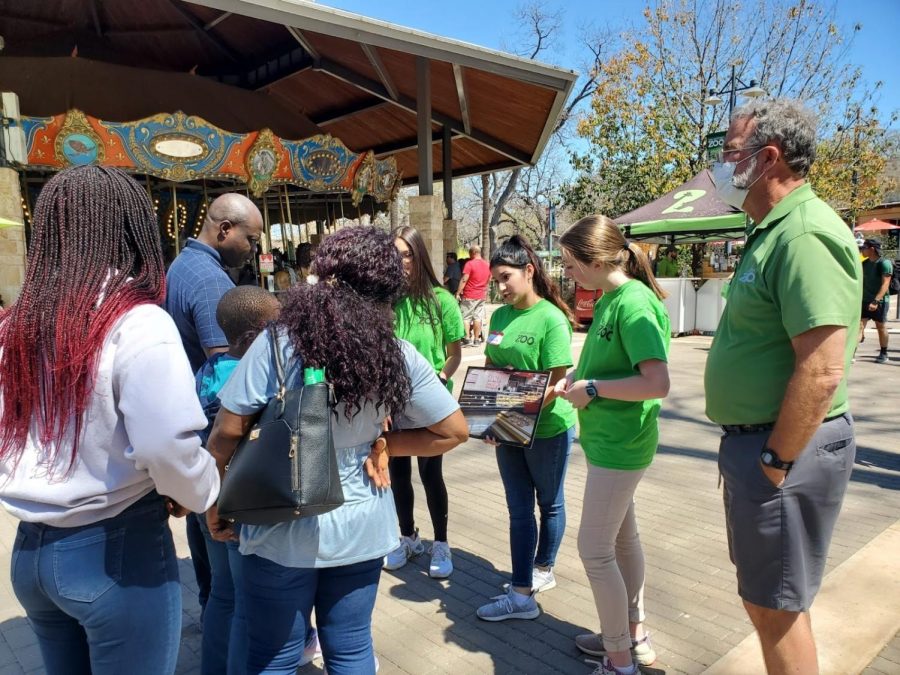A “Wild” volunteer opportunity
Alan the giraffe’s tongue is about 17 inches long, one inch per foot of giraffe. I know this because I was licked on the back by Alan while preparing his snacks. Volunteering at the San Antonio Zoo is never a dull moment.
I volunteer through the education department. We not only educate people about our animals, but the conservation efforts we are doing, and what guests can do to help these animals. Volunteering is something people don’t think will benefit them in the long run. There are so many unique opportunities out there. You just have to go and look for them. Personally, I started this program to gain experience in working with animals. This will look good to colleges, especially if I am going into animal science.
I started in the Wildlife Allies. Each session starts out in a classroom setting with an instructor. The Allies learn all about a topic. The topic can be anything from pollinators to animal enrichment to crocodilians. Then, they go into the zoo to go behind the scenes and listen to a keeper talk to learn more about the subject of the session. After lunch, they will go into the zoo with a table, some teaching props, and their fresh knowledge to share with guests. We like to call this interp, short for interpretation. Being a teaching assistant for the Wildlife Allies, the newer volunteers, is a shift an Advocate can pick up.
Once a full seasonal session is complete, and the instructors approve, the Allies will become Wildlife Advocates. As a Wildlife Advocate, I can assist in any of the general admission animal experiences, which includes Lory Landing, Kangaroo Krossing, Flamingo Mingle, Giraffe Feeding, and other seasonal experiences and events. Some seasonal activities that I have done are assisting with Zoo Camp, the Touch Tank, Monarch Fest, and Zoo Boo.
Duties I may have in any of these positions may include talking to guests, answering questions, cleaning, preparing food, collecting browse (branches herbivores like to munch on, but is not part of their full diet), and enforcing rules for both the safety of the guests and animals.
This program has really helped me to get out of my shell as far as speaking to strangers. When I started, I didn’t know how to approach people, much less actually talk to them. Now, I am able to go on and on about our animals at the zoo and conservation to just about anyone.
If you are interested in this program, applications for the spring session will open in January, and is available for ages 14-17. If you are accepted, there is a fee of $60 for supplies.

